#Tibbo BASIC
Explore tagged Tumblr posts
Text
Presenting CODY App Blocks
Introduction
Furthering our mission to create hardware and software that simplify and speed up the development of Internet of Things (IoT) and industrial automation devices, Tibbo is proud to present CODY App Blocks.
CODY is Tibbo's project code wizard. It generates functional sample Tibbo BASIC code that follows our best practices and can serve as the foundation for your applications.

CODY App Blocks takes Tibbo's low-code approach even further, providing a visual programming environment that cuts down development time. This feature makes it easier to visualize the program flow and integrate high-level functional code blocks, including HTTP, Message Queuing Telemetry Transport (MQTT), and Azure IoT Hub.

A New Workflow for Embedded Development
CODY provides an abundance of examples for using Tibbo hardware features, with new samples of common use cases published all the time. Find an example with the features you need, read its brief tutorial, and customize it to fit your needs.
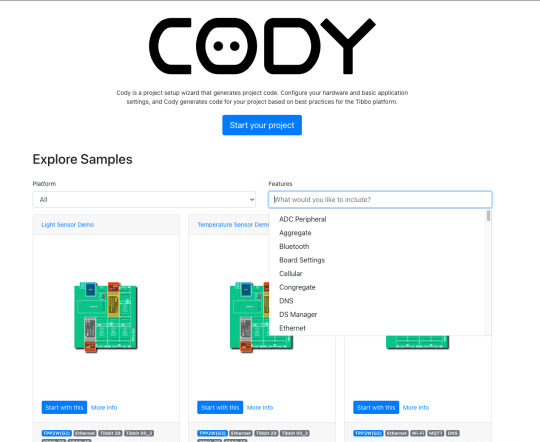
Samples contain application code in the form of App Blocks. You can modify a sample without writing any code — just use the App Blocks to change the flow of the program. Understanding what code is generated for a specific block is as easy as opening up the block and inspecting the code.
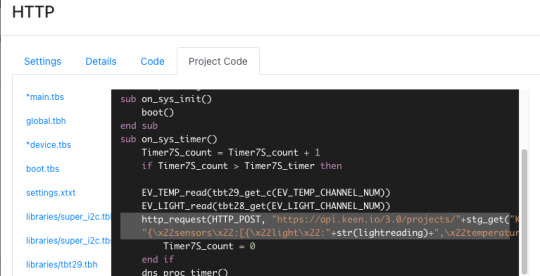
Data that is passed between nodes is automatically converted to the correct type. No more looking up what is the correct way to convert between different types!
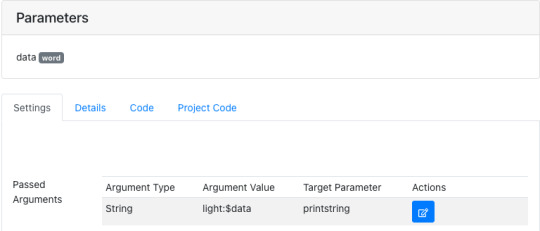
WebTIDE Integration
CODY — and by extension App Blocks — is fully integrated into WebTIDE, the web-based version of the venerable Tibbo Integrated Development Environment (TIDE). This means that App Blocks can be accessed directly from within WebTIDE to configure the application's logic, update the code, and debug devices.

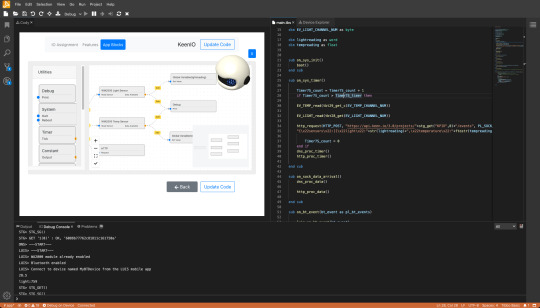
Committed to Development
We are constantly adding new App Blocks to CODY, including Tibbits, cloud features, and other high-level functionality. Have a block that you would like added? Let us know!.
Try CODY App Blocks now!
#Tibbo#Tibbo Technology#CODY#App Blocks#low code#programming#WebTIDE#Tibbo BASIC#programmable hardware#internet of things#IoT#industrial automation
1 note
·
View note
Text
Global IoT Device Management Market Analysis, Trends, Research Methodology, Key Insights by 2022

According to the new market research report on "IoT Device Management Market by Solution (Real-Time Streaming Analysis, Security Solutions, Data Management, Remote Monitoring, Network Bandwidth Management), Service, Application Area, Deployment Model, and Organization Size - Global Forecast to 2022", Internet of Things (IoT) Device Management Market - Global Forecast to 2022, the market is expected to grow from USD 693.4 Million in 2017 to USD 2,559.6 Million by 2022, at a Compound Annual Growth Rate (CAGR) of 29.8%.
This report covers major IoT device management courses of action, for instance, data management, steady spilling examination, security game plan, remote checking, and framework information transmission management, nearby the market floats some place in the scope of 2017 and 2022. The creating augmentation of related devices and happening to savvy sensors are driving the advancement of the overall IoT device management feature. The essential prerequisite for joined device management organize is moreover an imperative driving variable for IoT device management Market.
Browse and in-depth TOC on “IoT Device Management Market”
69 - Tables
67 - Figures
157 - Pages
Speak With Analyst @ https://www.marketsandmarkets.com/speaktoanalystNew.asp?id=210200083
Brilliant assembling is relied upon to command in the application territories amid the conjecture time frame
IoT accept a key employment inside the amassing utility with the assistance of recognizing confirmation development. With the relationship of contraptions or things with Information Technology (IT) or IoT, either through introduced shrewd devices or by using definite identifiers and convictions providers that can converse with a brilliant helping framework structure and information systems, age strategies can be improved and the entire lifecycle of things from collecting to dumping may be checked. By naming things and compartments, a more straightforwardness can be jumped on the unmistakable quality of the shop ground, the spot and demeanor of substances, and the reputation of amassing machines.
North America is relied upon to hold the biggest market share in the IoT device management market
Likewise with respect to the geographic appraisal, North America is the most basic spot in the IoT device management market. Countries, together with the US and Canada are the most basic shoot drivers of the spot. The strong cash related limit of North America empowers those worldwide zones to place eagerly in key IoT-engaged devices and answers/organizations.
Request For PDF Broucher @ https://www.marketsandmarkets.com/pdfdownloadNew.asp?id=210200083
Data management is relied upon to hold the biggest market share in the IoT device management market
Data Management is a champion among the most fundamental necessities of a business undertaking this is sending IoT age. The associated devices, together with sensors, names, and actuators, make and transmit tremendous measures of information reliably. The conventional information control systems are missing to store, take a gander at, and recuperate this record. Thusly, substances management for IoT is getting a huge balance and is predicted to secure the greatest marketplace degree for the term of the figure
The major vendors covered in the IoT device management market include Microsoft Corporation (US), IBM Corporation (US), Oracle Corporation (US), PTC Inc. (US), ARM Ltd. (UK), Aeris (US), Smith Micro Software (US), Tibbo Systems (Taiwan), DevicePilot (UK), Xively (US), Zentri (US), Cumulocity GmBH (Germany), Proximetry (US), Einfochips (US), Wind River Systems Inc. (US), and Capricode (Finland).
Contact: Mr. Rohan MarketsandMarkets™ UNIT no 802, Tower no. 7, SEZ Magarpatta city, Hadapsar Pune, Maharashtra 411013, India 1-888-600-6441 Email: [email protected] Content Source : https://www.marketsandmarkets.com/PressReleases/iot-device-management.asp
#IoT Device management market#IoT Device management market Size#IoT Device management market Analysis#IoT Device management market Trends#Network Bandwidth Management#iot device market#iot device
0 notes
Text
Tibbits are colorful pre-programmed modules for building IoT devices
At first glance, Tibbits look like building blocks, but each one is a module or a connector that makes it easier to build connected devices and systems. Tibbits were created by Tibbo Technology, a Taipei-based startup that exhibited at Computex this week (it showed off a humanoid robot built from various Tibbits).
Pre-programmed Tibbit modules from Tibbo
The heart of the Red Dot Award-winning Tibbo Project System (the company used bright colors to make its modules stand out from other hardware) is the Tibbo Project PCB, which includes a CPU, memory and Ethernet port. Then you pick Tibbits, with pre-programmed functionality (such as RS232/422/485 modules, DAC and ADC devices, power regulators, temperature, humidity or pressure sensors or PWM generators), to plug into your PCB. Once done, you can place your project in one of Tibbo’s three enclosure kits (custom enclosures are also available).
Tibbo also offers an online configurator that lets you preview your device to see if it will work the way you want before you begin building, and its own programming languages (Tibbo BASIC and Tibbo C) and app development platform.
from RSSMix.com Mix ID 8176395 https://techcrunch.com/2019/05/31/tibbits-are-colorful-pre-programmed-modules-for-building-iot-devices/ via http://www.kindlecompared.com/kindle-comparison/
0 notes
Text
Tibbits are colorful pre-programmed modules for building IoT devices
At first glance, Tibbits look like building blocks, but each one is a module or a connector that makes it easier to build connected devices and systems. Tibbits were created by Tibbo Technology, a Taipei-based startup that exhibited at Computex this week (it showed off a humanoid robot built from various Tibbits).
Pre-programmed Tibbit modules from Tibbo
The heart of the Red Dot Award winning Tibbo Project System (the company used bright colors to make its modules stand out from other hardware) is the Tibbo Project PCB, which includes a CPU, memory and Ethernet port. Then you pick Tibbits, with pre-programmed functionality (such as RS232/422/485 modules, DAC and ADC devices, power regulators, temperature, humidity or pressure sensors or PWM generators), to plug into your PCB. Once done, you can place your project in one of Tibbo’s three enclosure kits (custom enclosures are also available).
Tibbo also offers an online configurator that lets you preview your device to see if it will work the way you want before you begin building, and its own programming languages (Tibbo BASIC and Tibbo C) and app development platform.
0 notes
Text
Serial Device Server Market Seeking Growth Emerging Players (2019-2025) - Moxa, Digi International, Advantech

The Serial Device Server economy is expected to witness a CAGR growth of XX% within the forecast period (2019-2025) and reach a value of ~US$ by the end of 2025, according to a report released by the Research Kraft market.
This Serial Device Server market research report provides an in-depth assessment of this business space, along with a brief overview of its various market segments. The study details the entire market scenario in terms of revenue and volume, through a basic summary of the Serial Device Server market regarding its current position and industry size. The research also includes important insights about the market's geographical outlook, coupled with an elaborate study of the Serial Device Server market's competitive backdrop.
DOWNLOAD FREE SAMPLE REPORT @ https://www.researchkraft.com/request-sample/1027809
Company (Top Players) Profiles:
Moxa, Digi International, Advantech, Siemens Industrial Communication, Comtrol Corporation, 3onedata, OMEGA, Westermo, Atop Technologies Inc., Kyland, Perle, EtherWAN Systems, Korenix Technology, Sealevel Systems, ORing Industrial Networking Corp., Chiyu Technology, Tibbo Technology Inc., Silex Technology America, Inc., Sena Technologies, UTEK
The Market is Segmented by Product Type as Follows:
1-port Serial Device Server
2-port Serial Device Server
4-port Serial Device Server
8-port Serial Device Server
16-port Serial Device Server
Others (32-port Serial Device Server, etc.)
Breakdown Information by Application and Market Share and Growth, Covering:
Access Control Systems
Attendance System
POS Systems
Others
A comprehensive research report entitled Global Serial Device Server Market Research Report presented here is a smart perspective on the global market for Serial Device Server that offers a complete market estimate of market dynamics, SWOT analysis, strategies, and market revenue over the 2019-2025 forecast period. The report highlights important aspects such as segmentation, competitiveness, and analysis of area. The research study includes factors such as market share, CAGR, output, and consumption in relation to the geographic sectors associated with that industry.
Get it at the Discounted price: https://www.researchkraft.com/check-discount/1027809
In the study, the global market for Serial Device Server is thoroughly examined and evaluated so that market participants can develop their business strategy and ensure long-term success. The authors of the report used language easy to understand and complicated statistical images but offered comprehensive information and data on the global Serial Device Server market. This report provides useful information for players and suggests outcome-based ideas to give them a competitive edge on the global Serial Device Server market.
The report includes as follows:
The report provides current data, an outline of the history and future forecasting.
The report includes an in-depth analysis of the Serial Device Server Global Market, covering total global and regional markets in the world.
The 2018–2025 data is included. The all-inclusive market is generated by sales, usage, and pricing data (total global and by major regions).
The study points out leading Global manufacturers to be launched.
Serial Device Server market future to 2025 is included (in sales, consumption, and price).
Enquire more about the report @ https://www.researchkraft.com/send-an-enquiry/1027809
0 notes
Text
Tibbo Powers Cloud-Enabled Traceability Systems
Today, traceability is critical in all stages of the manufacturing process. Traceability allows manufacturers to follow the progress of their products throughout the entire production process, helping to identify problems. This is particularly important in the quality control (QC) phase — it is the last chance to ensure that products are safe, reliable, and meet specifications. This month, we're sharing with you our approach to traceability.
Traceability generally requires the ability to identify each unit in production, typically with barcodes. These barcodes are scanned at each production step.
Tibbo's cloud-enabled traceability solution consists of three components:
WS1102 programmable serial controller with a barcode scanner
TPS2L(G2) modular automation platform with an LCD screen
A database and app in the Microsoft Azure cloud
The wireless nature of the WS1102 allows us to freely move them (and attached barcode scanners) between the workstations. A Tibbo BASIC app on the WS1102 receives and processes data from the barcode scanner and serves this data to our app in the Azure cloud.
At the heart of each workstation is a TPS controller. The modularity of the Tibbo Project System (TPS) means that we can tailor each unit to the needs of its station. One neat feature we've implemented is the configuration of WS1102 controllers via QR codes displayed on the TPS' LCDs. This allows us to move the WS1102s and barcode scanners between the stations. Scan the code on the screen, and the WS1102 knows where it is.
Our Microsoft Azure app analyzes collected telemetry and keeps track of each step that a production unit has passed through. The system also records all additional test data generated at every step. The cloud-based system is crucial for identifying missed or improperly executed production steps.
youtube
Watch the video above for a demonstration of the whole system in action. For an even more detailed explanation, see our case study on traceability. Interested in implementing a similar traceability solution? Feel free to contact us for more information!
0 notes
Text
Simplify Your Product's Configuration With L.U.I.S.
Have you ever unboxed your new "smart" device only to find that its setup is a long, tedious process? Often, just configuring an IP address or Wi-Fi parameters requires multiple steps!
For example, you may have to disconnect your phone from the network and connect it to that device running in AP mode. Or you may have to use an Ethernet patch cable, connect your notebook directly to the device, fix your notebook's IP, and only then finally get to the device's configuration screen! All this doesn't sound so smart for the age of smart devices.
Tibbo's Loadable User Interface System (L.U.I.S.) simplifies your product's deployment by making its configuration fast and effortless. All your customers will have to do is install the L.U.I.S. smartphone app and connect to your product via the Bluetooth Low Energy (BLE) interface. There is no need for additional cables or even a computer, just the ubiquitous smartphone.
L.U.I.S. was designed to be infinitely flexible, with the device side sending the description of its configurable settings to the L.U.I.S. app. This means that L.U.I.S. is not limited to a few predetermined options, and each one of your products may offer its own unique list of configurable parameters. It's entirely up to you what configuration options will be available via L.U.I.S.
Now, adding L.U.I.S. functionality to Tibbo BASIC projects is easier than ever thanks to full L.U.I.S. support in CODY, our project code generator. Define the settings, link them to your product's functions, create a L.U.I.S. page, and voilà — your product is now easy to configure!
youtube
True to the no-code spirit of CODY, using it to add L.U.I.S. functionality to a project requires you to write zero code. To get you started, we have created a step-by-step tutorial video demonstrating the process of enabling the configuration of basic networking settings through L.U.I.S.
The L.U.I.S. app is available for iOS and Android devices, and as a web app.
Implement L.U.I.S. Now
#Tibbo#IoT#IIoT#Industrial Automation#Industry 4.0#low-code#no-code#CODY#L.U.I.S.#Development#Loadable User Interface System#tutorial#smart#configuration#Youtube
0 notes
Text
Tibbo's Remote IO Controllers Offer Unmatched Flexibility
Also in this issue:
CODY: Develop Complete Applications Without Any Coding
PinMux Wrapper Gains I²C Support

Remote I/O devices are well-established in the industrial world. By supporting popular communications protocols such as Modbus, they give other equipment and control systems such as SCADA access to remote inputs and outputs. Tibbo's Remote IO (RIO) controllers offer an important advantage over the competition. Built on our Tibbo Project System (TPS) platform, our RIO devices are tremendously flexible because all of their I/O and sensing capabilities come from the installed Tibbit modules. While other vendors offer long lists of remote I/O devices in various fixed configurations, we let you pick and choose just the features that you require for each particular project. Need a certain I/O function? Install the right Tibbit. Have no use for something? Leave it out. Since all this flexibility can be intimidating to novice users, we're rolling out a number of standard starter configurations. These devices are ready to be deployed or can serve as the starting point for your own tailored controller. RIO controllers run our open-source Remote IO app, which features an advanced, intuitive UI that simplifies controller configuration. The interface displays the actual layout of the device and lists the Modbus registers associated with each I/O line or Tibbit function. To simplify the deployment in the field, our RIO controllers optionally allow the configuration of basic parameters from your smartphone over a BLE connection.
Explore Tibbo Remote IO
---
CODY: Develop Complete Applications Without Any Coding
youtube
In our previous CODY tutorial, we demonstrated how to configure an RS485 port (Tibbit #05) on a TPP2(G2) to work with Tibbo's Bus Probe #03 (light sensor) — all in a matter of minutes! This month, we show you how to take that project over the finish line and turn it into a functional application without writing any code. How do we accomplish such a magical feat? With AppBlocks, the last link that turns CODY into a truly no-code development tool. Now you can spend less time on developing code and focus more on creating and deploying solutions. The AppBlocks feature provides an intuitive visual development environment. In this environment, all supported software modules are represented by blocks, which you drag onto and interconnect inside the project canvas. For many usage scenarios, CODY is now capable of producing fully functional, deployable applications. We invite you to see for yourself the truly revolutionary nature of AppBlocks. As the development is ongoing — with new functionality and support for more features being added regularly — we welcome any feedback regarding your experience. P.S. Feel free to contact us for a personalized, complimentary guided tour of CODY.
Try AppBlocks Now
---
PinMux Wrapper Gains I²C Support
As part of the ongoing development of Tibbo's Ubuntu-derived distribution, we've updated the Python wrapper for PinMux to support I²C communications. The wrapper now allows you to dynamically map the I/O lines of the Plus1 SoC to I²C peripherals. To demonstrate this functionality, we've added an I²C example using Tibbit #36 (an accelerometer) to our Getting Started guide. This example consists of the sample code and a custom library for this Tibbit, both written in Python. Tibbit #36 was chosen because it is one of our more complicated I²C sensors, which means that your code will probably be simpler than this sample code. Separately, we've also updated the Wi-Fi and Bluetooth configuration scripts included in our distribution's Out-of-Box Experience (OOBE). These new interactive scripts consolidate the functions of several older scripts to make wireless driver installation and configuration truly effortless. Getting the latest versions of the PinMux wrapper and OOBE is as simple as performing an update and upgrade of your installation — also covered in our guide!
Get Started Now
#Tibbo#IoT#IIoT#Industrial Automation#Industry 4.0#low-code#no-code#CODY#development#Linux#Ubuntu#PinMux#Python#I²C#I2C#tutorial#Remote IO#RIO884#Modbus#Youtube
0 notes
Text
Introducing the WM2000EV Evaluation Kit and Ubuntu-Derived Linux Distribution for Tibbo Project System
Folks,
We are proud to make these two important announcements:
WM2000EV Evaluation Kit for the WM2000 Wireless IoT Module
Ubuntu-derived distribution for our LTPP3(G2) board WM2000EV Evaluation Kit
WM2000EV Evaluation Kit
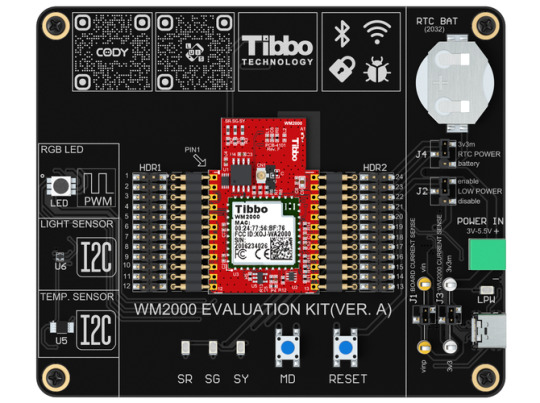
The newly released WM2000EV is an elegant kit for evaluating the capabilities of the WM2000, Tibbo's programmable Wi-Fi/BLE module.
The kit was designed to be completely self-contained and enable the exploration of the module's features without having to wire in any external circuitry. To this end, the board comes equipped with all essential buttons and status LEDs, temperature and light sensors, as well as a PWM-controlled RGB LED. The included CR2032 battery (installed in a holder) can be used to test out the WM2000's low-power "sleep" mode, in which the RTC continues operating and can wake the module up at a preset time.
To aid you in learning about the WM2000's features and capabilities, we have prepared a tutorial featuring a variety of projects.
Your journey begins with testing the IoT/sensor application that comes preloaded on the kit's WM2000. Follow the accompanying step-by-step guide, and in as little as 10 minutes you will have the WM2000 connected to and reporting the measured temperatures and light levels to the Keen service.
The second chapter teaches you how to wirelessly upload a different application into the WM2000. This application showcases controlling the board's RGB LED from a modern, non-reloading web page. In this step, you will also learn about the module's ability to store two applications at once.
Further steps will explain wireless debugging, using CODY (our project code generator), debugging code wirelessly, connecting to Microsoft's Azure cloud service, as well as using the WM2000 in BLE-enabled access control applications.
The kit is powered via an included USB-C cable, which can also be used as a wired debugging interface accessible from our TIDE and WebTIDE software. To facilitate debugging, the board's USB port is connected to the serial debugging pins of the WM2000 via a USB-to-serial converter IC. Wired debugging is useful when wireless debugging via Wi-Fi is unavailable or inconvenient.
Two pin headers are provided for easy access to the WM2000's pins. The module itself is held in place by spring-loaded pins and can be easily popped out and back in. The board even features jumpers and test points for measuring the current consumption of the board and the module.
Order Samples Now!
Ubuntu-based Distribution for the LTPP3(G2) Board

To facilitate the rapid development and deployment of Tibbo Project System (TPS)-based automation and IoT applications while offering our users a familiar environment, we have created an Ubuntu-based Linux distribution.
Ubuntu is one of the world's most popular flavors of Linux. It runs on all kinds of platforms and architectures, and there is a massive amount of community resources available for all project types.
Tibbo's Ubuntu-derived distribution is ideal for system integration, one-off projects, low-volume applications, educational props, and rapid prototyping of products, as well as experimentation and exploration. It provides a user experience similar to that of single-board computers such as Raspberry Pi, but on an extendable hardware foundation that was purpose-built for IoT and automation projects.
Those familiar with Ubuntu will find themselves at home on this new distribution offered by Tibbo. For example, there is a Personal Package Archive (PPA) that is accessible directly through the standard package management utility, apt-get. The PPA contains several tools to help you get started with our Ubuntu-based distribution on the LTPP3(G2) as quickly and effortlessly as possible.
The LTPP3(G2) is a member of the TPS family. A popular choice for automation and IoT projects, our TPS lineup includes the mainboards, I/O modules called Tibbits, and attractive enclosures. The LTPP3(G2) is a Linux mainboard designed around our advanced Plus1 chip.
Included in the PPA, the Out-of-Box Experience (OOBE) script simplifies the device's configuration with a series of interactive prompts that guide you through the process of setting up Wi-Fi/Bluetooth connectivity and the board's Ethernet ports for pass-through or dual-port operation.
Despite its young age, our Ubuntu-based distribution is already hard at work at our manufacturing facility in Taipei. For example, we use LTPP3(G2) boards for testing Tibbits during their production. Employing two high-definition cameras and a touchscreen, this system serves as the testbed for different Tibbits. Thanks to the power of the Plus1's pin multiplexing (PinMux), the individual I/O lines of the board can be remapped on the fly to cater to the needs of whichever Tibbit is being tested at the moment — no kernel rebuild or reboot required. On this new distribution, the board's GPIO lines are reconfigurable in code, much like they are in a typical Tibbo BASIC application.
While this effort remains a work in progress, the development of our Ubuntu-based distribution has reached a point where we feel comfortable sharing a working build with you. We have prepared a repository that contains not only the latest working image, but also automation scripts for customizing your builds through Docker.
We invite you to join us in exploring the exciting opportunities opened up by this new distribution. As always, we welcome your feedback to help us deliver useful solutions tailored to your needs.
Visit the LTPP3(G2) Page!
#Tibbo#IoT#IIoT#industrial automation#Industry 4.0#Tibbits#TIDE#WebTIDE#IDE#Linux#Ubuntu#Evaluation Kit#WM2000#LTPP3(G2)
0 notes
Text
A Trio of New Tibbits Offer Enhanced Options For Measurement, Connectivity, and Power.
Plus, Meet WebTIDE!
Folks,
Here at Tibbo, we remain hard at work creating the solutions that make your IoT and automation projects come to life. In recent weeks, we've released not one, not two, but three Tibbits that significantly enhance the capabilities of our Tibbo Project System (TPS) devices.
In addition, we're pulling back the curtain on a new project that will revolutionize your Tibbo BASIC development workflow and experience. Read on to learn more!
Tibbit #43-1 Four-Channel Streaming ADC
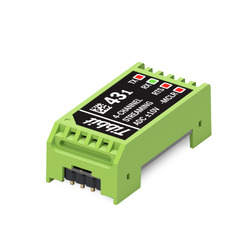
The new ADC Tibbit #43-1 has a built-in microcontroller and can output a steady stream of low-jitter measurements via the UART interface. Streaming solves a common data acquisition pain point: getting the main CPU to perform ADC conversions at precisely spaced time intervals. Achieving this is usually very hard. Employing a Tibbit that makes all the measurements on its own and just streams them into the system gets the job done.
Using serial port communications also simplifies the Tibbit's interfacing with our LTPP3(G2) Linux board. While Linux is not known for the fast or convenient handling of I²C or SPI comms, it is perfectly capable in the serial port department. It is really easy to write an app that picks the incoming data from the serial port's buffer, and the buffer size is usually large enough to keep accumulating the incoming data stream while the system is tied up elsewhere.
Tibbit #43-1 can function in single-ended or differential mode. In the single-ended mode, it offers four input channels with a ±10V input range. In the differential mode, there are two channels with a ±20V range. The Tibbit performs up to 1,000 ADC conversions per second while achieving an effective resolution of 10 bits + sign.
Each device is shipped pre-calibrated to minimize the linearity error and zero offset. The calibration parameters are stored in the onboard EEPROM. In operation, the Tibbit's microcontroller performs on-the-fly data corrections based on the stored calibration data.
The Tibbit's onboard microcontroller implements a simple command-and-reply interface for configuring the device's operating mode (single-ended or differential), active channels, sampling rate, and other parameters. There is also a command for performing single conversions, which allows using the Tibbit in a non-streaming, polled mode as well.
Last but not least, #43-1 generates all additional voltages on board and does not require Tibbit #12 (±15V power source), as was the case with our original ADC Tibbit #13.
Order Samples Now!
Tibbit #46 Cat-M1/NB-IoT Modem
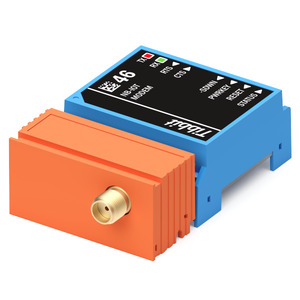
Many IoT and industrial automation projects require cellular communications as the only, main, or backup way of maintaining the cloud connection.
Our new Tibbit #46 provides Cat-M1 and NB-IoT connectivity for your TPS-based systems. NB-IoT is an excellent choice for the cost-effective transmission of small amounts of data from stationary IoT devices. While possessing a very limited bandwidth, NB-IoT networks typically offer superior signal penetration and, hence, better coverage. Applications that cannot be stationary can rely on Cat-M1, which supports roaming between cellular towers.
A dedicated library unlocks the full capabilities of Tibbit #46, allowing you to automate the process of initializing the modem, as well as automatically establishing and maintaining a PPP connection. The library also offers an AT command mode for "manual" modem control. You can easily include the library into your project through CODY, our project code wizard.
Order Samples Now!
Tibbit #33 Wide Input Range Industrial-Grade Power Supply
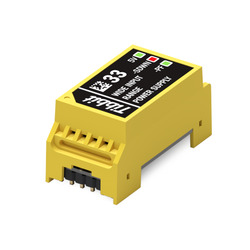
As some of you may know, Tibbo is active in the OEM market for industrial and automotive products. For years, we've been perfecting the craft of making highly reliable, rugged devices designed to work in some of the most unusual and challenging environments on Earth — aluminum smelter plant, anyone?
One of the crucial components of any tough industrial-grade product is, of course, its power regulator. We have invested years into choosing the right power supply circuitry. A lot of that unique experience we garnered along the way has now been distilled into the new power supply Tibbit #33.
This new Tibbit provides up to 1.5A of current from input voltages as low as 8V and as high as 60V, and in the entire industrial temperature range from –40°C to +85°C. The module's ability to handle voltage dips down to 6V and spikes up to 100V makes it suitable for battery-powered and automotive applications.
A single Tibbit #33 will be sufficient for most TPS configurations. Several Tibbits can be paralleled to increase the available current budget, for power redundancy, or load sharing. The -SHDN (shutdown) control line provides a way to shut down individual Tibbits #33, while the -PF (power fail) line allows detecting input power problems.
To achieve the best performance in high-temperature conditions, even the Tibbit's plastic shell has been revised to use a new high melting point mix!
Order Samples Now!
Announcing WebTIDE, Our Cross-Platform Development Solution

From its inception 20 years ago, Tibbo's mission has always been to provide hardware and software solutions that simplify and speed up the creation of IoT and industrial automation devices. In continuing this quest, we are once again focusing on Tibbo IDE (TIDE) — our development tool supporting all our programmable products.
The reason is simple: The world has moved beyond its reliance on Windows, and TIDE has remained in the "single-OS jail." Sure, it was possible to run it on Linux through Wine, but the experience wasn't perfect. Plus, this still left out many other platforms and device form factors.
Enter WebTIDE — our in-browser, cross-platform solution that works on Windows, Linux, and macOS, as well as iOS*, Android*, and Chrome OS*. WebTIDE runs in Chrome, Safari, Edge, and other popular browsers, achieving true multi-platform portability.
Unlike its desktop counterpart, WebTIDE is tightly integrated with CODY, our handy online project code generator. Create a project in CODY and hand it off to WebTIDE for further development. Want to change your project's configuration? To save time, make the changes in CODY, and they will propagate into and merge with the code you've been editing in WebTIDE.
A marquee feature of WebTIDE is the one many of our users have dreamed of, and it is arriving just in time for this socially distanced era: the ability to debug Tibbo BASIC code running on Tibbo devices installed on remote networks. For code debugging, WebTIDE relies on a separate debugging extension app. This extension can be deployed almost anywhere, even on a system connected to another network — thus enabling the remote debugging of your apps.
Please note that WebTIDE is still in early beta, and we are continuing to work on porting and implementing many vital features. However, nearly all of the main functionality is already present. Join the growing ranks of WebTIDE users and be sure to tell us if you find a bug or want a specific feature or change — absolutely all feedback is welcome!
* With the debugging extension deployed elsewhere.
Try It Now!
0 notes
Text
IoT Device Management Market will expected to grow marketshare $2,559.6 Million by 2022

According to the new market research report on "IoT Device Management Market by Solution (Real-Time Streaming Analysis, Security Solutions, Data Management, Remote Monitoring, Network Bandwidth Management), Service, Application Area, Deployment Model, and Organization Size - Global Forecast to 2022", Internet of Things (IoT) Device Management Market - Global Forecast to 2022, the market is expected to grow from USD 693.4 Million in 2017 to USD 2,559.6 Million by 2022, at a Compound Annual Growth Rate (CAGR) of 29.8%.
Browse and in-depth TOC on “IoT Device Management Market”
69 - Tables
67 - Figures
157 - Pages
Speak With Analyst @ https://www.marketsandmarkets.com/speaktoanalystNew.asp?id=210200083
This report covers major IoT device management courses of action, for instance, data management, steady spilling examination, security game plan, remote checking, and framework information transmission management, nearby the market floats some place in the scope of 2017 and 2022. The creating augmentation of related devices and happening to savvy sensors are driving the advancement of the overall IoT device management feature. The essential prerequisite for joined device management organize is moreover an imperative driving variable for IoT device management Market.
Data management is relied upon to hold the biggest market share in the IoT device management market
Data Management is a champion among the most fundamental necessities of a business undertaking this is sending IoT age. The associated devices, together with sensors, names, and actuators, make and transmit tremendous measures of information reliably. The conventional information control systems are missing to store, take a gander at, and recuperate this record. Thusly, substances management for IoT is getting a huge balance and is predicted to secure the greatest marketplace degree for the term of the figure
Brilliant assembling is relied upon to command in the application territories amid the conjecture time frame
IoT accept a key employment inside the amassing utility with the assistance of recognizing confirmation development. With the relationship of contraptions or things with Information Technology (IT) or IoT, either through introduced shrewd devices or by using definite identifiers and convictions providers that can converse with a brilliant helping framework structure and information systems, age strategies can be improved and the entire lifecycle of things from collecting to dumping may be checked. By naming things and compartments, a more straightforwardness can be jumped on the unmistakable quality of the shop ground, the spot and demeanor of substances, and the reputation of amassing machines.
Request For PDF Broucher @ https://www.marketsandmarkets.com/pdfdownloadNew.asp?id=210200083

North America is relied upon to hold the biggest market share in the IoT device management market
Likewise with respect to the geographic appraisal, North America is the most basic spot in the IoT device management market. Countries, together with the US and Canada are the most basic shoot drivers of the spot. The strong cash related limit of North America empowers those worldwide zones to place eagerly in key IoT-engaged devices and answers/organizations.
The major vendors covered in the IoT device management market include Microsoft Corporation (US), IBM Corporation (US), Oracle Corporation (US), PTC Inc. (US), ARM Ltd. (UK), Aeris (US), Smith Micro Software (US), Tibbo Systems (Taiwan), DevicePilot (UK), Xively (US), Zentri (US), Cumulocity GmBH (Germany), Proximetry (US), Einfochips (US), Wind River Systems Inc. (US), and Capricode (Finland).
Contact: Mr. Rohan MarketsandMarkets™ UNIT no 802, Tower no. 7, SEZ Magarpatta city, Hadapsar Pune, Maharashtra 411013, India 1-888-600-6441 Email: [email protected]
0 notes
Text
Global IoT Device Management Market Scope, Opportunities, Trends, Forecast by 2022

According to the new market research report "IoT Device Management Market by Solution (Real-Time Streaming Analysis, Security Solutions, Data Management, Remote Monitoring, Network Bandwidth Management), Service, Application Area, Deployment Model, and Organization Size - Global Forecast to 2022", Internet of Things (IoT) Device Management Market - Global Forecast to 2022, the market is expected to grow from USD 693.4 Million in 2017 to USD 2,559.6 Million by 2022, at a Compound Annual Growth Rate (CAGR) of 29.8%.
Browse and in-depth TOC on “IoT Device Management Market”
69 - Tables
67 - Figures
157 - Pages
Speak With Analyst @ https://www.marketsandmarkets.com/speaktoanalystNew.asp?id=210200083
This report covers major IoT device management arrangements, for example, information management, constant spilling investigation, security arrangement, remote checking, and system data transmission management, alongside the market drifts somewhere in the range of 2017 and 2022. The developing multiplication of associated devices and coming of insightful sensors are driving the development of the worldwide IoT device management showcase. The basic requirement for united device management stage is additionally a noteworthy driving variable for IoT device management Market.
Data management is relied upon to hold the biggest market share in the IoT device management market
Data Management is a standout amongst the most basic necessities of a business undertaking this is sending IoT age. The connected devices, together with sensors, labels, and actuators, create and transmit gigantic amounts of data consistently. The traditional data control techniques are lacking to store, look at, and recover this record. Along these lines, realities management for IoT is picking up an enormous footing and is foreseen to protect the biggest marketplace extent for the term of the figure

Brilliant assembling is relied upon to command in the application territories amid the conjecture time frame
IoT assumes a key job inside the assembling utility with the help of distinguishing proof innovation. With the association of contraptions or things with Information Technology (IT) or IoT, either through installed cunning devices or by utilizing exact identifiers and certainties suppliers that can talk with a smart helping system framework and data frameworks, generation procedures can be improved and the whole lifecycle of things from assembling to dumping might be checked. By labeling items and compartments, a more straightforwardness can be gotten on the prominence of the shop ground, the spot and air of substances, and the notoriety of assembling machines.
Buy Now @ https://www.marketsandmarkets.com/Purchase/purchase_reportNew.asp?id=210200083
North America is relied upon to hold the biggest market share in the IoT device management market
As with regards to the geographic assessment, North America is the most imperative spot in the IoT device management market. Nations, together with the US and Canada are the most critical blast drivers of the spot. The durable money related capacity of North America enables those global areas to put intently in fundamental IoT-empowered devices and answers/administrations.
The major vendors covered in the IoT device management market include Microsoft Corporation (US), IBM Corporation (US), Oracle Corporation (US), PTC Inc. (US), ARM Ltd. (UK), Aeris (US), Smith Micro Software (US), Tibbo Systems (Taiwan), DevicePilot (UK), Xively (US), Zentri (US), Cumulocity GmBH (Germany), Proximetry (US), Einfochips (US), Wind River Systems Inc. (US), and Capricode (Finland).
Contact: Mr. Rohan MarketsandMarkets™ UNIT no 802, Tower no. 7, SEZ Magarpatta city, Hadapsar Pune, Maharashtra 411013, India 1-888-600-6441 Email: [email protected]
#IoT Device management market#IoT Device management#data management#Internet of things#IoT device#iot#remote monitoring
0 notes
Text
Introducing the WS1102 Wireless Serial Controller, New High-Voltage ADC Tibbit, and More
In this issue:
WS1102 Programmable Wireless RS232/422/485 Controller
Tibbit #43-2 — Four-Channel Streaming ADC With a ±200V Range
Python Wrapper for Plus1's PinMux (Peripheral "Switchboard")
WebPWM — RGB LED Control Demo for the WM2000EV Kit
WS1102 Programmable Wireless RS232/422/485 Controller

Meet the newest member of Tibbo's family of programmable serial controllers — the WS1102. This compact, cost-effective device combines Wi-Fi and Bluetooth Low Energy (BLE) interfaces with a universal RS232/422/485 port. Like all members of the DS110x family, the WS1102 ships preloaded with our Serial-over-IP (SoI) application, which has been adapted for the wireless-first nature of this new programmable device server. When running the SoI app, the WS1102 is compatible with Tibbo's well-known TDST software, which includes the Virtual Serial Port Driver (VSPD). To simplify deployment away from traditional Ethernet networks, the WS1102 also comes preloaded with the new SoI Companion App. It implements a configuration interface that can be accessed over BLE from the L.U.I.S. (Loadable User Interface System) smartphone app*. The SoI Companion App provides access to all SoI settings. This makes the WS1102 our first serial controller that can be fully configured from a smartphone. While it was designed with the SoI app in mind, the WS1102 is still a fully programmable serial controller. Programmability makes it ideal for edge Internet of Things (IoT) applications. For example, the WS1102 can be tasked to query serial Modbus devices (something that a remote cloud server cannot reliably do) and then securely send the collected data to the cloud for aggregation and analysis. The WS1102 is based on Tibbo's cloud-native WM2000 Programmable Wireless IIoT Module and thus inherits the WM2000's capabilities. In addition to integrated Wi-Fi (802.11a/b/g/n over 2.4GHz/5GHz) and BLE 4.2, the WS1102 can store two compiled Tibbo BASIC/C application binaries and supports over-the-air (OTA) updates, wireless debugging, and Transport Layer Security (TLS). Native support for TLS1.2 allows the WS1102 to communicate with Microsoft Azure, Amazon Web Services (AWS), Google Cloud, and virtually any other cloud services provider. * The L.U.I.S. app is available for iOS, Android, and as a web app.
Order WS1102 Now
Tibbit #43-2 — Four-Channel Streaming ADC With a ±200V Range
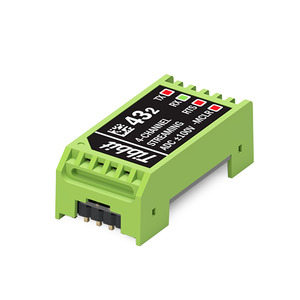
The new Tibbit #43-2 is a wide-input-voltage range version of the #43-1 ADC Tibbit that we introduced back in March. Nominally rated at ±100V in the single-ended mode and ±200V in the differential mode — but with absolute maximum ratings of ±120V and ±210V, respectively — Tibbit #43-2 can even be used to acquire AC signals, for example, in phase detection and power quality factor monitoring systems. Other possible applications include battery bank management, solar panel voltage monitoring and logging, as well as industrial instrumentation. In essence, Tibbit #43-2 adds the capabilities of a multichannel wide-input-range voltmeter to your TPS devices. Like its sibling, the new #43-2 device offers four single-ended or two differential channels and incorporates a microcontroller. The latter enhances the linearity and precision of analog-to-digital conversions and also enables low-jitter signal sampling and data streaming through the serial port.
Order Tibbit #43-2 Now
Python Wrapper for Plus1's PinMux
As a part of the ongoing development of Tibbo's Ubuntu-derived distribution, we've updated our Personal Package Archive (PPA) with a Python wrapper for PinMux. PinMux is a truly unique feature of the Plus1 SoC. It is a "switchboard" that dynamically connects the CPU's peripherals to its GPIO lines. Moreover, such reconfiguration is fully transparent to the OS and does not require a reboot. Flexible remapping of peripherals, while common on lightweight microcontrollers, has hitherto never been implemented on Linux-grade chips in a comprehensive, fully symmetrical manner. The new Python wrapper gives you access to this "switchboard" and allows your code to map and remap peripherals on the fly and as needed. For example, you may dynamically switch a CPU pin from being a GPIO line into acting as the TX line of a UART, stay in this mode for a while, and then turn the pin back into a GPIO line. With traditional Linux CPUs, such reassignments would require editing the device tree and rebooting the system on each change. Not so with Plus1, its PinMux "switchboard," and the new Python wrapper! For more information on the wrapper, see our Getting Started guide.
Get Started Now
WebPWM — RGB LED Control Demo for the WM2000EV Kit

We've just published the next chapter in our guided journey of exploration for the WM2000EV. As you may recall, in the first chapter, we illustrated how the WM2000's native support for Transport Layer Security (TLS) and our streamlined API simplify sending data into the cloud. In the second chapter, you'll first learn how to use the Companion App* to configure the module for connecting to your Wi-Fi network, as well as for wireless debugging. Next, you will use TIDE, our development software for Windows, to upload the WebPWM application into the module. This project is a blueprint for creating cloud-connected lighting control applications with the WM2000 module. Just like with Tibbo's traditional "wired-first" devices, the upload process is as simple as opening a project in TIDE, selecting the WM2000 in the Device Explorer, and clicking Run. Finally, you will access the WM2000 through the application's web interface. The interface demonstrates the dynamic control of the WM2000EV's RGB LED using the module's PWM channels. The modern implementation of the web interface allows controlling the LED in real time — no page reloads required. * The Companion App comes preloaded on every WM2000 and can be accessed via the L.U.I.S. app (available for iOS, Android, and as a web app).
Take the Next Step
#Tibbo#IoT#IIoT#Industrial Automation#Industry 4.0#Tibbits#Linux#Ubuntu#Device Server#Wireless#Serial#WS1102#WM2000EV#Evaluation Kit
0 notes
Photo

Explore the DS110x Family of Programmable Serial controllers the family of DS110x BASIC- and C-programmable serial controllers integrates everything we learned from you about building serial device servers. Features include Wi-Fi, #PoE, #display, #RS232, #RS485, #DIN rail and wall mounting options.- http://tibbo.com/programmable/controllers.html #converters #controllers #microcontrollers #soi #iot #automation #serial #485 #customize #electronics (at Tibbo Technology) https://www.instagram.com/p/BpGl9LXAELP/?utm_source=ig_tumblr_share&igshid=1wv08vmsxce2w
#poe#display#rs232#rs485#din#converters#controllers#microcontrollers#soi#iot#automation#serial#485#customize#electronics
0 notes
Text
Code example:
Simple TCP Echo
Wondering what Tibbo BASIC and C applications look like? Here is a super-small Tibbo BASIC project implementing a TCP echo application. Just 15 lines of code do the job, and you get a fully asynchronous, event-driven echo application!
sub on_sys_init() net.ip="192.168.1.228" '<== SET DEVICE IP HERE
sock.num=0 'for clarity sock.rxbuffrq(1) 'request RX buffer sock.txbuffrq(1) 'request TX buffer sys.buffalloc 'allocate buffers sock.protocol=PL_SOCK_PROTOCOL_TCP sock.localportlist="1000" sock.inconmode=PL_SOCK_INCONMODE_ANY_IP_ANY_PORT sock.reconmode=PL_SOCK_RECONMODE_3 end sub
sub on_sock_data_arrival() sock.setdata(sock.getdata(sock.txfree)) sock.send
end sub
Contact Tibbo for more info
0 notes